Power Creep Concerns: Understanding the Risks and Solutions
Updated On: October 26, 2025 by Aaron Connolly
Defining Power Creep Concerns
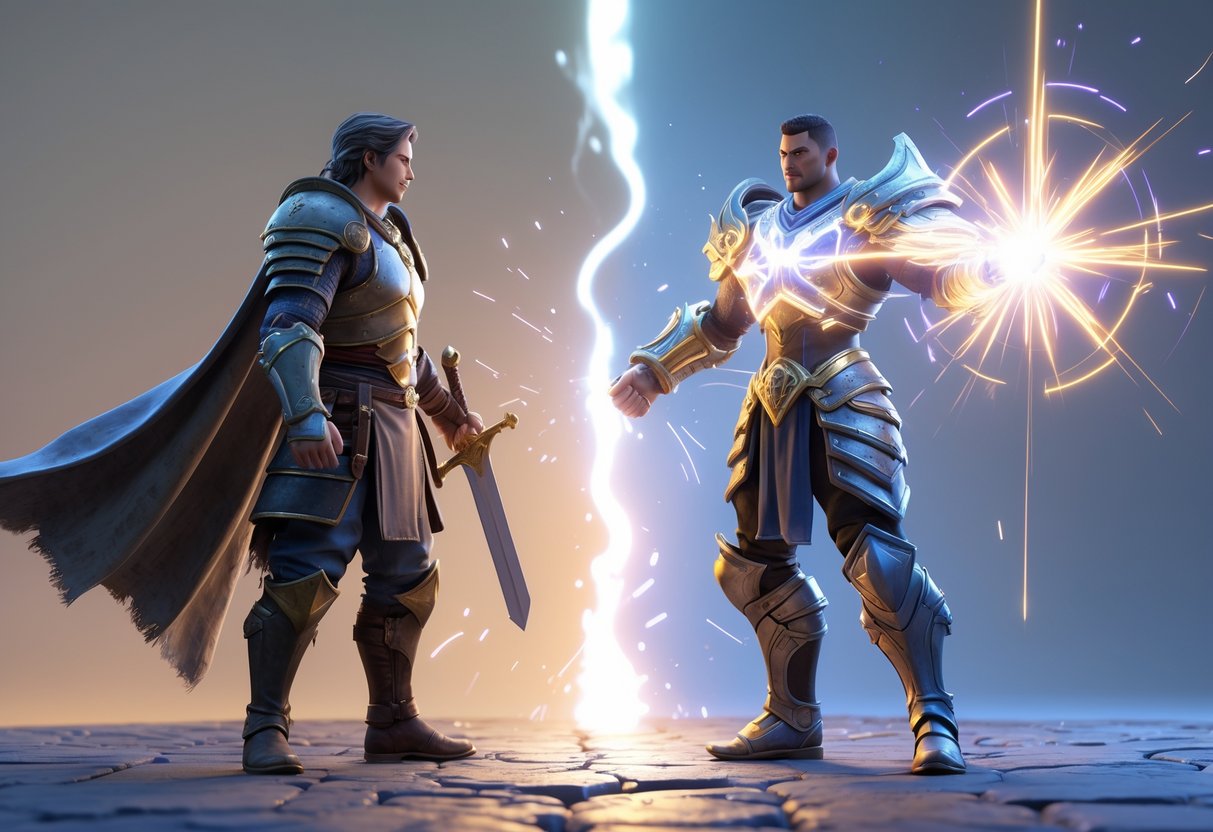
Power creep shows up when new game content gets stronger than the old stuff, making earlier items or abilities feel kind of pointless. Developers have to walk a tightrope—everyone wants cool updates, but the game still needs to feel fair. Spotting the warning signs early helps both players and devs see when things start going off the rails.
Origins of Power Creep
Power creep usually starts from a few familiar places in competitive games. Sometimes, developers rush to meet deadlines and skip proper testing.
Marketing pressure really ramps up the problem. Companies want to sell new content, so they make it just a bit better than what’s already there. You’ll see this a lot in mobile games, where that little edge pushes players to spend more.
Lack of planning is honestly the main culprit. If devs don’t plan for long-term balance, every update feels like a contest to outdo the last. That’s how you end up with each new character or weapon being way too strong.
Similar content design makes power creep even worse. When two items do basically the same thing, everyone just picks the stronger one. Gacha games really struggle here—new characters arrive with the same abilities as old ones, but with extra perks.
Time pressure forces developers to cut corners. Instead of inventing new mechanics, they just bump up stats on old items. Sure, it saves time, but it’s a quick path to broken game balance.
How Games Experience Power Creep
Games go through power creep in small steps that add up over time. You’ll see it everywhere, no matter the genre.
Live service games get hit hard. Devs feel like every update needs to be exciting, so they keep raising power levels. MMORPGs usually try to manage this with gear resets and level caps.
Card games make power creep obvious. New cards show up with better stats than old ones, even when their effects are basically the same. People just drop their old decks when new sets come out.
Competitive shooters get caught in the same loop. New guns have to feel fresh, but that often means they’re just stronger. Even map tweaks can throw everything off.
Mobile games sometimes use power creep as part of their business model. Premium items “fix” problems that the game itself created, leading to pay-to-win situations that annoy everyone.
With constant updates, developers have to keep checking if old stuff still matters. If they don’t, each patch just pushes older content further into the background.
Common Signs of Power Imbalance
You can spot power creep if you know what to look for. Certain patterns pop up before things get totally out of hand.
Abandoned content is a dead giveaway. If players ignore whole groups of items or characters, it’s probably because the new stuff made them useless. Empty servers or forgotten game modes say the same thing.
Player frustration grows when hard-earned achievements suddenly lose all value. Veterans feel burned when their favorite items get tossed aside overnight. New players also struggle to keep up as the requirements keep changing.
Gameplay patterns get stale fast. If everyone uses the same gear or tactics, the variety is gone. That’s a clear sign the latest content is just too strong.
| Warning Sign | Impact | Game Type |
|---|---|---|
| Meta dominance | Limited strategies | All competitive games |
| Content abandonment | Wasted development | MMORPGs, card games |
| Player exodus | Reduced engagement | Mobile, live service |
| Uniform builds | Boring gameplay | RPGs, MOBAs |
Community discussions usually pick up on these problems before devs do. Players spot overpowered combos and fill forums with complaints. These chats can reveal the start of power creep before it gets out of hand.
The Mechanics of Damage Output Escalation
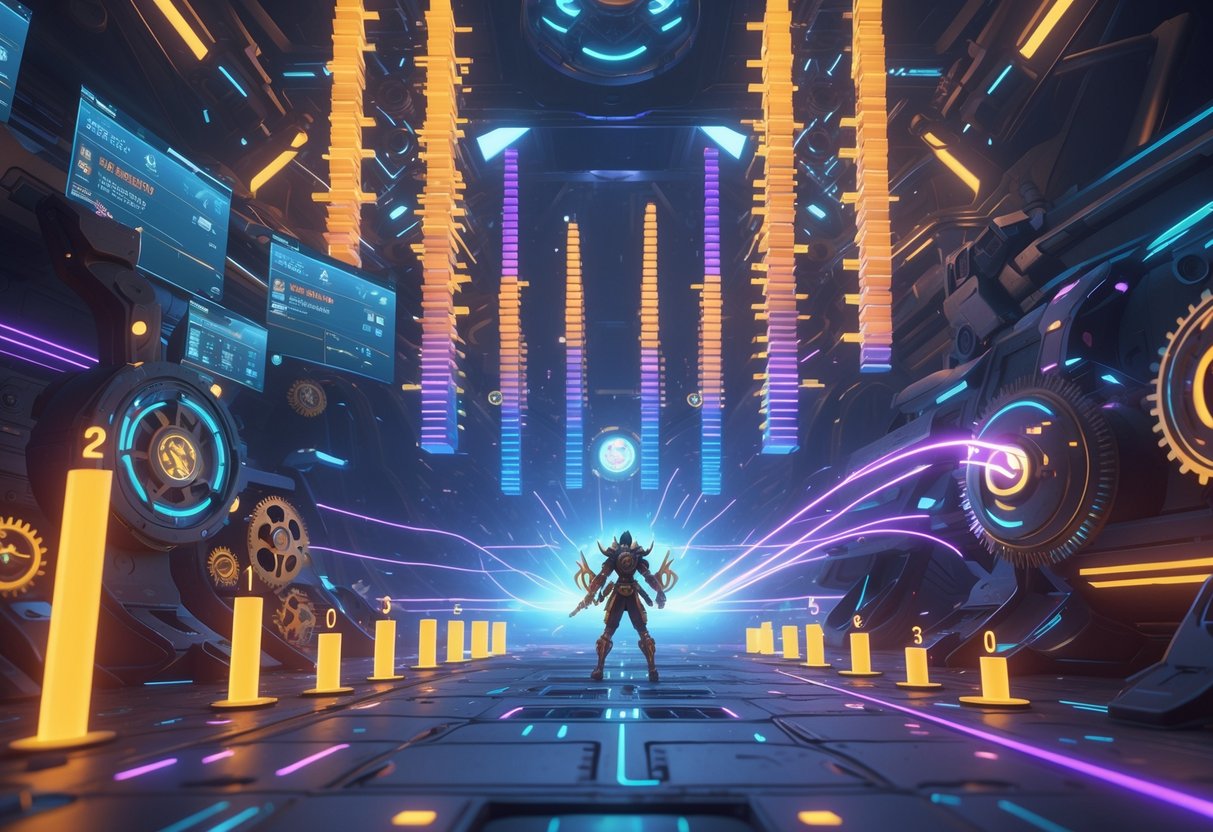
Developers often crank up damage numbers and player stats in updates to keep things fresh. This slow, steady inflation turns yesterday’s big damage into today’s average.
Increasing Damage and Its Effects
When devs boost damage in competitive games, they raise the bar for what’s possible. New weapons hit harder, abilities do more burst, and matches get faster.
This changes how games feel. More damage means positioning matters way more—one slip-up, and you’re out. There’s no time to recover.
Strategic gameplay shifts a lot as damage climbs. Teams lean toward aggression, since defensive plays become risky. What used to be a safe rotation now feels like a gamble.
You’ll notice this in esports titles. Valorant’s agent releases sometimes bring in abilities that out-damage previous characters. Apex Legends drops new weapons that just outshine earlier options.
The psychological impact is real too. That satisfying elimination from last week suddenly feels weak next to the latest meta. Players start chasing whatever’s new.
Stat Inflation Across Updates
Power creep really shows up in slow, steady stat increases. Every patch bumps things up just a little, but it adds up fast.
Health, DPS, cooldowns—they all get a bit higher with each update. A 5% boost here and there seems tiny, but after a few patches, it’s a big jump.
| Update Period | Average Damage Increase | Player Adaptation Time |
|---|---|---|
| Monthly patches | 3-7% per ability | 2-3 weeks |
| Seasonal updates | 10-15% overall | 4-6 weeks |
| Annual overhauls | 20-30% meta shift | 2-3 months |
Strategic gameplay turns into a game of constant catch-up. Teams have to rethink their plans as old strategies stop working after each stat shift.
Pro players find this tough. Their muscle memory and practiced timings go out the window when damage numbers change. What worked in scrims might flop in tournaments if an update drops right before the big day.
Devs rarely roll back these changes. It feels like nerfing content people already got used to, so they just keep raising the numbers.
Community Reactions and Player Sentiment
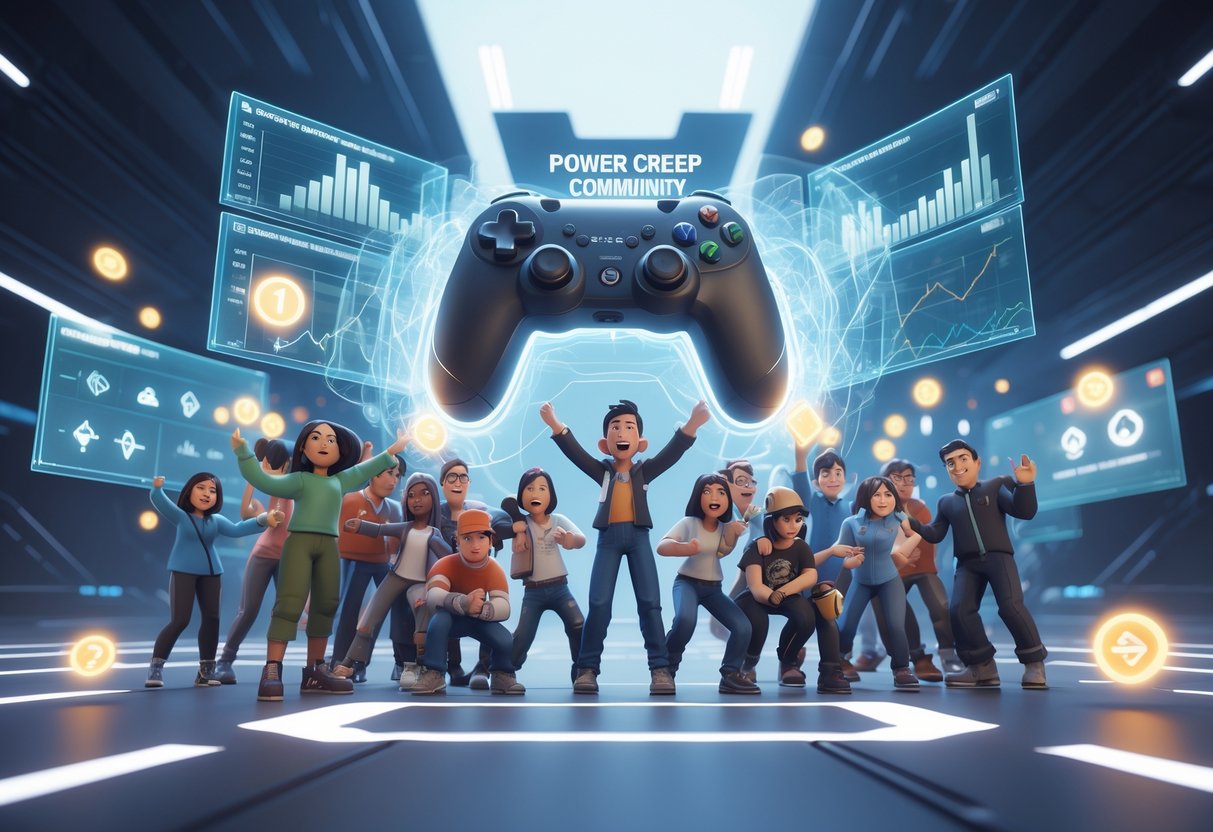
Gamers have mixed feelings about power creep. Some love flashy new abilities, while others just want fair, strategic play. Reddit lights up with heated debates, and players keep pushing devs to do something.
Player Frustration and Feedback
Players don’t hold back when power creep hits their favorite games. A lot of people say overpowered new content makes their old characters feel useless.
Community discussions show this divide. Some folks enjoy the wild, high-power meta. Others worry it’ll wreck long-term balance.
Casual players seem to like the power boost—they can hold their own in matches. Hardcore players, though, want the challenge back.
One gripe that comes up a lot is board visibility in strategy games. When stats get too high, it’s tough to even follow what’s happening.
Feedback depends on who you ask. Newbies might love feeling strong right away. Veterans usually want a fair fight.
Role of Reddit in Shaping Opinion
Reddit is where most of these debates happen. Gaming subreddits fill up with arguments about power creep.
Big posts about character power creep rack up hundreds of comments. You’ll see everything from memes to serious rants about balance.
Reddit threads can turn into echo chambers. People with the same views stick together, and other opinions get buried.
The platform spreads opinions fast. One post about power creep can go viral and hit thousands of players in no time.
Content creators watch Reddit closely. They use hot topics from there to make videos or stream discussions.
| Platform Feature | Impact on Power Creep Discussions |
|---|---|
| Upvote system | Amplifies popular opinions |
| Comment threads | Creates detailed debates |
| Gaming subreddits | Concentrates player feedback |
Demands for Change
Players don’t just complain—they want action. The top request is for stat adjustments to bring things back into balance.
A lot of people call for “stat squishes.” Basically, devs would shrink all the numbers but keep the same power ratios. This makes things easier to track.
Players also ask for:
- Regular balance patches
- Better testing before new stuff drops
- Clear communication about future plans
Some groups organize boycotts or review bomb games when devs ignore power creep. That usually gets a response.
Returning players have a hard time, too. After a break, their old characters feel weak compared to what’s new.
Not everyone wants the same fix. Casual players and competitive players often want totally different things, so devs can’t please everyone.
Impact on Game Balance and Strategic Gameplay
Power creep throws off the balance that makes competitive games fun and fair. New content keeps beating the old, so players have to drop their favorite strategies and buy into whatever’s latest.
Disruption of Competitive Play
Competitive matches lose their edge when new items or characters just do more damage. Players using older stuff can’t keep up.
Tournament organizers have to make tough calls. They can ban overpowered new content, but then matches might feel stale. Esports games like League of Legends need constant balance patches just to keep things working.
The power gap splits the player base. People who buy new content climb the ranks, while those sticking with old favorites fall behind.
Pro teams scramble to keep up. Tactics they spent months perfecting can become useless overnight. Coaches and analysts feel the pressure.
Shifting Strategies Due to Power Creep
Strategic gameplay changes fast once power creep kicks in. Teams drop complex plans for simple, brute-force tactics with the new overpowered stuff.
Old counter-strategies just don’t work anymore. The classic rock-paper-scissors balance falls apart when new “rocks” beat everything. The game’s skill ceiling drops.
Pro matches start to look the same. The same overpowered characters show up every time. Even the commentary gets repetitive.
New players can’t keep up with the shifting meta. Guides go out of date almost instantly. The learning curve just gets steeper.
Effects on Legacy Content
Older characters and items just can’t compete anymore. Stuff players spent months learning gets pushed into casual play.
People feel like their investment is wasted. Buying old characters or mastering their mechanics suddenly means nothing. That’s pretty frustrating for longtime fans.
Developers have to keep reworking old content. They try to bring legacy stuff up to par, but it’s a never-ending cycle.
The game’s original identity fades away. Classic playstyles vanish. Fans lose touch with the game they first fell in love with.
Case Studies: Notable Power Creep Controversies
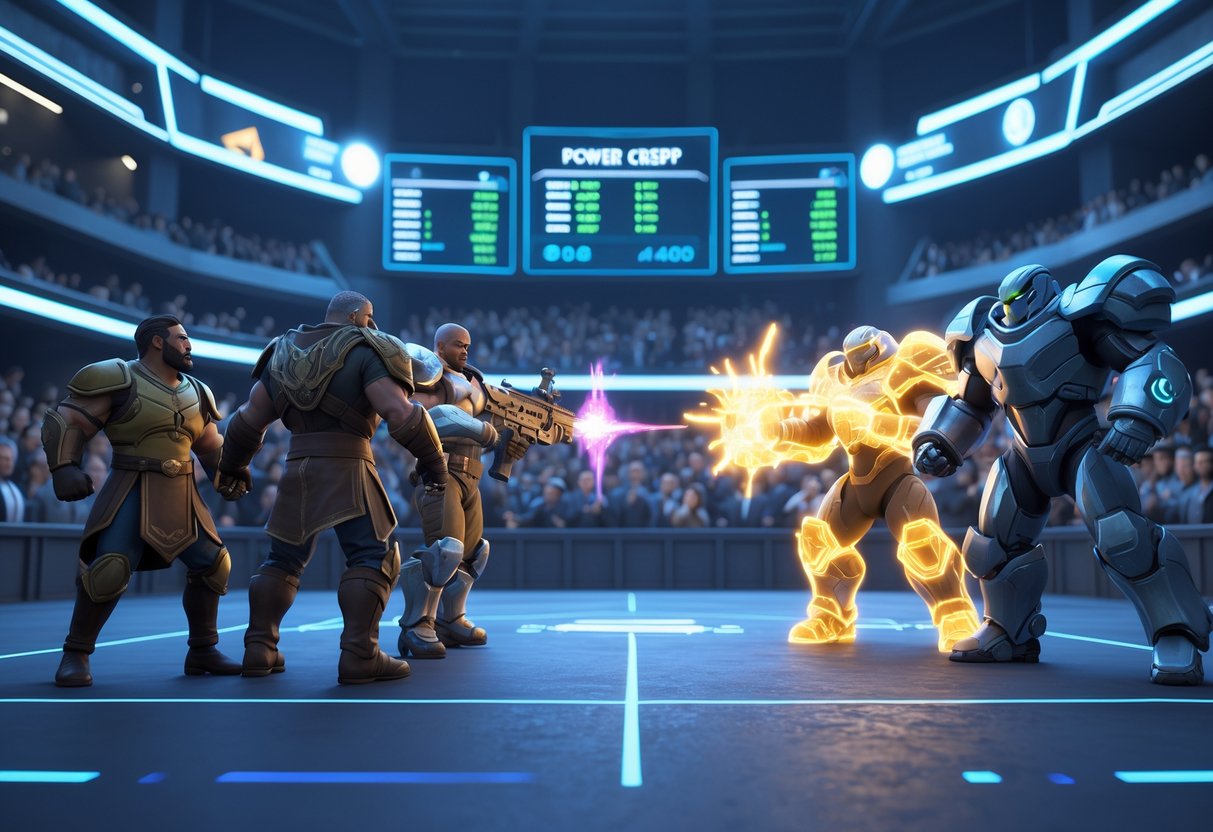
Real-world examples make it clear how power creep can wreck competitive balance. Mobile games chase revenue with new characters, while RPGs struggle to keep classes balanced.
Brawl Stars: The Problem with New Brawlers
Supercell’s Brawl Stars is a textbook case of power creep with its character releases. New brawlers almost always show up stronger than the old ones to drive sales.
When Surge and Colette launched, they dominated matches right away. Their unique mechanics left older characters in the dust. Players felt like they had to buy new brawlers just to keep up.
The cycle’s easy to spot:
- Release an overpowered brawler
- Get a sales bump for a few weeks
- Nerf them after backlash
- Repeat with the next release
Game developers walk a fine line here. They rely on new content for revenue, but each new release threatens the game’s competitive integrity.
A lot of players stopped using old favorites like Shelly or Bull. Those characters just couldn’t match the new ones. The meta kept shifting, and it frustrated anyone who invested time in mastering specific brawlers.
Role-Playing Games and Class Disparity
Traditional RPGs constantly wrestle with power creep, especially as new expansions and class updates roll out. Just look at World of Warcraft—it’s been dealing with this for over twenty years, and it’s still a headache.
Every expansion bumps up the level cap and brings new, flashier abilities. When Blizzard added classes like Death Knight and Demon Hunter, they started off stronger than the originals. That left older classes feeling a bit left in the dust.
Final Fantasy XIV takes a different route. Square Enix tweaks all classes at once during big patches. They also condense older content so it still matters, even after a few expansions.
The real difference comes down to how the devs think about the problem:
| Approach | Example | Result |
|---|---|---|
| Power escalation | WoW expansions | Old content becomes obsolete |
| Horizontal progression | FFXIV patches | All classes remain viable |
Game developers have to pick between giving players exciting new power or keeping the game balanced for the long haul. Most seem to chase the short-term thrill, which just leads to more power creep and a split player base.
Challenges Faced by Game Developers

Game developers face tough calls every time they add new content and try to keep players happy. Managing power creep takes some serious planning, or else the game’s balance and community trust get thrown out the window.
Balancing New and Old Content
Trying to balance fresh content with what’s already there is a nonstop challenge for dev teams. The industry calls it “feature creep”—basically, adding so many powerful abilities that old stuff just feels stale.
Technical Balance Issues:
- New characters need to feel cool, but not break the game
- Older heroes need updates to stay in the mix
- Power scaling can get out of hand if devs aren’t careful
Games like Raid: Shadow Legends have dodged this a bit by adding hard mode dungeons. That way, old heroes get new uses, and players stay interested.
Money complicates things, too. Studios rely on new content to drive revenue, but they can’t let fairness slip. Every update messes with the long-term health of the game, so devs have to weigh each decision.
Key Strategies Include:
- Counterplay options—let players adapt instead of just forcing upgrades
- Synergy systems—help old and new content work together
- Horizontal progression—offer more variety, not just more raw power
Addressing Ongoing Community Concerns
Community feedback can make or break a game’s rep. Sometimes, a tiny balance issue blows up on social media and forums, turning into a full-blown controversy.
Common Community Complaints:
- “Pay-to-win” cries when new stuff feels too strong
- Veterans feeling their investment’s been trashed
- Newbies struggling to catch up with the meta
Dev teams can’t hide anymore. Every design choice gets picked apart online. That means devs have to explain changes and respond fast—otherwise, things get ugly.
Effective Communication Strategies:
- Regular dev blogs that break down balance ideas
- Feedback sessions with the community before big updates
- Clear roadmaps for upcoming content
Devs at Fateless say, “power creep should be about progression, not just making things stronger.” I like that—makes updates feel meaningful, not just bigger numbers.
It’s tricky, though. Competitive players want perfect balance. Casuals just want cool new stuff. Devs have to keep talking to everyone and find a compromise that keeps most folks happy.
Consequences of Power Imbalance

When power creep runs wild, it messes up the experience for everyone. Players lose interest, communities fracture, and games lose their shine.
Obsolescence of Older Characters
When new stuff is just flat-out better, older game elements become pretty much useless. Devs drop new characters or items that outshine the originals, and suddenly, everyone ditches their old favorites.
It’s a nasty cycle. People spend time and money on older content, only to watch it get steamrolled. In card games like Magic: The Gathering, whole decks just stop working when new sets come out.
Competitive games get hit the hardest. Players end up forced to use whatever’s newest and strongest, or else they can’t keep up. That takes away real choice and kills off diverse strategies.
Common signs of obsolescence:
- You rarely see older characters in tournaments
- Community guides ignore past favorites
- Win rates for older strategies drop off a cliff
- Players start joking that old content is “literally unplayable”
Reduced Player Engagement
Power imbalance chases players away. Some get overwhelmed by shifting power levels and just quit trying to keep up.
New players have it roughest. If older content doesn’t matter, they face a steep climb—either spend a bunch on new stuff or accept losing a lot.
Forums light up with frustration, as people vent about bad balance and call out devs. Players worry about their favorite styles getting ruined by new updates.
Long-time players get fed up too. When power creep kills off their favorite strategies, some just walk away for good. That revolving door means games keep losing experienced players.
It hurts the social side, too. If power gaps get too big, matches between old and new content just aren’t fun for anyone.
Monetisation and Ethical Questions
A lot of the time, power creep is really a monetisation strategy, and that raises some eyebrows about fairness. Devs sometimes make new paid content stronger on purpose, so people feel pressured to buy in.
That hits younger players and those on tight budgets the hardest. If you have to keep spending to stay competitive, it stops being fun and starts feeling like a money pit.
Free-to-play games are notorious for this. They use power creep to nudge players into buying upgrades or new characters. That’s how “pay-to-win” happens—when your wallet matters more than your skills.
Ethical red flags include:
- Paid content always beats free stuff
- New releases come out so fast, your recent buys go stale
- Ads push power, not variety
- Balance changes just happen to favor the latest paid items
This power imbalance wrecks fair play. Suddenly, skill and strategy take a back seat to who spent more money, and that’s not what esports should be about.
Damage Output and the Gameplay Experience
Damage numbers keep going up in modern games, and that changes everything. Strategy gives way to quick eliminations, and it’s easy to lose track during the chaos.
Escalating Power vs. Strategic Play
When damage climbs too high, strategic depth kind of vanishes. Instead of tactical fights, players just get deleted in seconds.
The DPS Arms Race New characters always seem to hit harder than the old ones. Devs end up buffing everyone just to keep up, and the power levels spiral.
Players get annoyed with this loop. Here’s a tip: focus on learning positioning and timing instead of chasing the latest high-damage hero.
Strategic Elements That Suffer
- Team composition matters less when anyone can frag out instantly
- Resource management fades away with super-fast fights
- Map control gets overshadowed by raw damage
Roles start to blur. Suddenly, assassins tank hits, and support characters nuke enemies just as hard.
Heads up: This makes it harder for new players to learn the basics, since they never see those longer, more thoughtful fights.
Visibility and Clarity Issues
High damage output turns matches into visual soup. Players can’t tell what hit them or how to get better.
Screen Effects Overload Big damage means big effects—lots of particles, screen shakes, and numbers everywhere. It’s a mess, and you lose track of what’s happening.
Information Processing Problems
- Death recaps stop making sense when three or more abilities nuke you at once
- Reaction time goes beyond what humans can manage
- Learning opportunities vanish when you die too fast to process what happened
Impact on Competitive Play Even pros struggle to follow the action. Commentators can’t explain rapid eliminations. New viewers get confused and tune out.
Pro tip: Watch replays in slow motion to figure out what’s really happening and get better at positioning.
Community Solutions and Fan Suggestions

Players keep coming up with ideas to fight power creep. Most suggestions fall into three camps: buffing old stuff, nerfing new stuff, or just balancing things better from the start.
Buffing Older Characters
A lot of players want devs to bring old characters up to par, instead of nerfing the new ones. Reddit threads are full of this—it’s the most popular, player-friendly fix.
Buffing keeps the fun of powerful abilities and makes old content worth using again. People don’t feel punished for sticking with their favorites.
Popular buffing suggestions:
- Raising base stats for legacy characters
- Adding new skills to outdated units
- Reworking old passives to be competitive
- Building synergies between old and new content
Devs like this because it keeps players happy, but it takes a lot of time and testing to avoid new balance headaches.
Nerfing Overpowered Additions
Nerfing new, overpowered stuff is always controversial. Players hate seeing their shiny new toys get hit with the nerf bat, especially after they’ve spent money.
Still, targeted nerfs can fix balance fast. Some community voices argue this shows devs care about fair play, not just profits.
Effective nerfing strategies:
- Small, gradual changes instead of big swings
- Compensation rewards for affected players
- Explaining the reasons behind nerfs
- Beta testing to catch problems early
It’s all about timing. Go too soft, and nothing changes. Go too hard, and players lose trust.
Developing Balanced Game Updates
Some fans want devs to stop power creep before it starts. They suggest more testing and feedback before new content launches.
Reddit users often talk about power level caps for new stuff. That way, new releases add variety, not just more strength.
Players like devs who listen and update balance regularly. Some communities have even set up their own testing groups, working with devs to spot power creep before it hits live servers.
Long-Term Effects on the Gaming Community
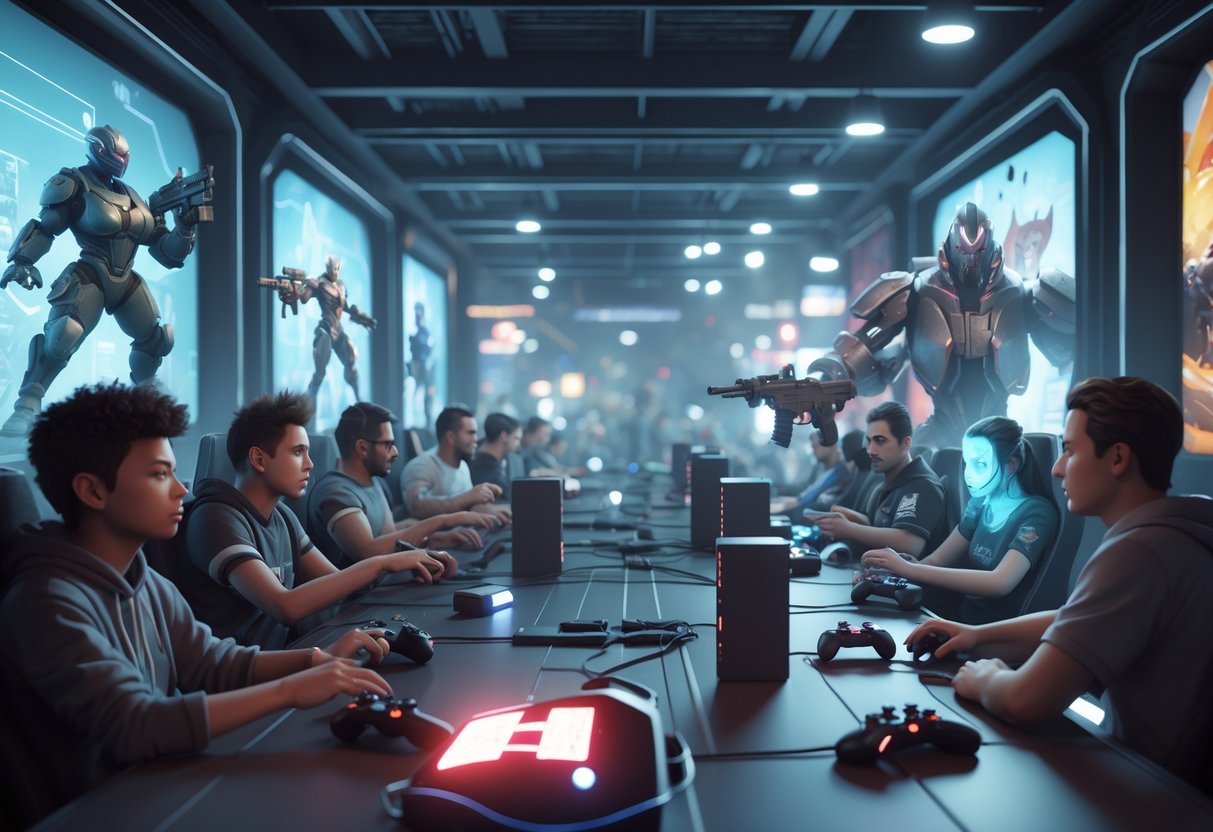
Power creep splits gaming communities. Players drift into different groups, and it’s not uncommon to see old fans walk away as things change.
Splintering Player Bases
Casual vs Competitive Divides
Power creep pushes casual and competitive players further apart. Keeping up with new content often takes a lot of time or money.
Casuals feel left out when their favorites get left behind. Frustration builds as the power gap widens.
Veteran vs Newcomer Tensions
Veterans get pretty salty when their collections lose value overnight. Years of progress can just vanish with one overpowered new release.
New players have to figure out what’s still playable and what’s not—no easy task.
Economic Pressure Points
- Free-to-play players: Can’t keep up without spending
- Budget gamers: Forced to pick between fun and finances
- Collectors: Watch their investments turn worthless as old items get tossed aside
Migration to Alternative Games
Community Exodus Patterns
When players get fed up, they don’t just quit—they look for something better. You’ll see whole friend groups jump ship together if power creep pushes them too far.
People usually head for games with smarter balance or clear rotation rules. They want to feel like their time actually matters.
The Ripple Effect
Big-name streamers and creators often start the exodus. Their fans usually tag along, which can really gut a game’s player base.
Old leaders become outspoken critics. They warn others about balance problems, and their stories can scare off new players for a long time.
Developer Response Pressure
Studios feel the heat as negativity snowballs. When players leave, companies have to pick between chasing quick profits or protecting the community for the long haul.
Some devs scramble to drop emergency balance patches or roll out legacy modes. But honestly, winning back trust after a split community? That’s a tough mountain to climb.
Future of Power Creep Management

Game developers are getting smarter about stopping power creep before it wrecks their games. They’re building systems that can’t be easily compared and using data to guide balance changes.
Strategies to Prevent Power Creep
The best defense is to make abilities that fill different roles instead of just outdoing each other. Developers who do this well create skills that can’t be directly compared.
Take a healing spell versus a damage amplifier. They each do their own thing, so one won’t just replace the other.
Planning ahead still matters a lot. Teams that playtest thoroughly spot balance problems before they blow up. Some research suggests half of power creep issues vanish with solid planning.
Here are a few strategies that actually work:
- Give abilities unique jobs, not just bigger numbers
- Playtest everything before launch
- Set clear power benchmarks
- Don’t make new items that are just old ones with better stats
Watch out: Rushed content almost always brings power creep headaches later.
Innovative Approaches to Balance
Modern devs rely on data-driven updates to fix balance fast. Player feedback helps, but sorting real advice from knee-jerk reactions isn’t easy.
Frequent balance patches keep things fresh. Magic: The Gathering found that releasing only about 1.5 strictly better cards a year works best.
Some new trends are popping up:
- Horizontal progression for more options, not just more power
- Seasonal resets so things don’t get out of hand
- Letting the community vote on changes
- AI-assisted testing to catch weird edge cases
A few teams even build strategy around shifting power levels, so old stuff stays useful as new mechanics roll in.
If you want a smoother experience, check out games like Path of Exile or League of Legends. They’re not perfect, but their balance updates set a decent standard.
Frequently Asked Questions

Power creep hits every genre a bit differently. Sometimes it makes old characters useless in fighting games, or it forces you to buy pricey new cards in trading card games. Here are some big questions players and devs ask when power levels start spiraling.
What are some classic examples of power creep in gaming history?
World of Warcraft probably tops the list for power creep. Early raids needed 40 players working hard for weeks. Later on, one person could solo those same raids in minutes.
In the first Pokémon games, legendary Pokémon maxed out around 600 base stats. Now, new ones often break 700, and old favorites can’t compete anymore.
Magic: The Gathering ran into power creep so bad they banned entire sets. Cards that once needed 6 mana for 4 damage now do the same for 2 mana—and toss in extra perks.
Street Fighter saw power creep too. In Ultra Street Fighter IV, combos hit 400+ damage, while the original rarely went above 200.
How can game developers prevent power creep in long-running series?
Horizontal progression helps more than vertical power boosts. Instead of making heroes stronger, devs can add new abilities that shake up gameplay without making old stuff useless.
Regular balance patches keep things even. League of Legends updates its roster every two weeks, so no single tactic rules for too long.
Setting hard limits on stats stops runaway scaling. A lot of card games now cap damage or health.
Seasonal resets bring everyone back to square one. This works especially well in competitive games where matchmaking needs to stay fair.
What impact does power creep have on game balance and player communities?
Power creep splits player communities into those who keep up and those who can’t. Free-to-play folks often get left behind when new, stronger content drops.
Old content just sits there, ignored. Years of work get wasted as dungeons and raids become pointless.
Tournaments lose their spark when only the newest, strongest options matter. Matches start looking the same, and viewers get bored.
New players face a wall if they need months or years of catch-up just to compete. Games with long progression chains struggle most here.
Can power creep be a positive aspect in any games, and if so, in what way?
Single-player games actually benefit from a bit of power creep. It gives players a sense of growth and keeps things interesting as they move forward.
Some multiplayer games use power creep on purpose to shake up the meta. Fighting games, for example, release new characters that force everyone to rethink their strategies.
Power creep can keep a game alive by giving veterans new goals. Without fresh challenges, even diehards might drift away.
Some genres need power creep to work. Role-playing games are all about getting stronger over time. Take that away, and you lose the magic.
What strategies can players use to adapt to power creep in their favourite online games?
Stick to games that balance content often, not just ones that keep adding stronger stuff. Teams that care about fair play usually handle power creep better.
Join communities that track the meta and share budget strategies. Plenty of forums and Discords help players keep up without breaking the bank.
Learn to spot when your favorite builds are outdated, and be open to new ideas. Clinging to the past usually leads to frustration.
Set a spending cap before you feel pressured to buy every new thing. Decide your limit and stick to it, no matter how tempting the latest release looks.
How does power creep affect the development and release of expansion packs or sequel titles?
Developers constantly feel pressure to make each expansion more thrilling than the last.
This pressure usually leads to bigger power boosts that just keep piling up.
Everyone wants the next release to outdo the previous one, or else players might walk away feeling let down.
Marketing teams definitely push for obvious power increases since those are way easier to promote.
Let’s be honest—“50% more damage” grabs attention, while something like “improved game balance” just sounds boring.
When developers work on sequels, things get tricky if the last game already had sky-high power levels.
They have to decide: do they reset everything, or just keep ramping up the numbers until it gets out of hand?
Expansion pack sales often ride on this idea of power creep.
Players expect their new purchase to give them a quick edge over older content, and that’s tough to ignore.

